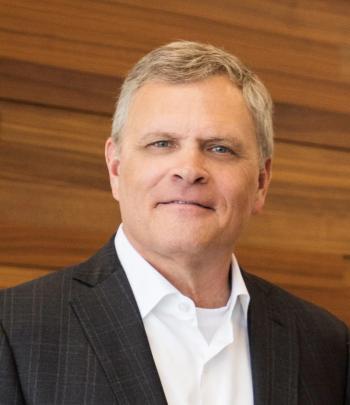
3 helpful solutions to value-based care obstacles
Using technology tools the right way can yield positive results
Obstacle 1
Physicians are missing relevant data
Picture a primary care physician: he or she is well versed in the vaccination schedule established for children since landmarks, such as age, determine when vaccines are due. But what about adult patients? Vaccines do not have the steady rhythm in adults that they do in children, but when they are indicated, a physician may be unaware of the need.
For example, an adult getting a cochlear implant often needs the pneumococcal vaccination before and after surgery. The doctor may not only be completely unaware of this requirement, but due to a communication gap with specialists, the primary care physician may not even know that a patient is getting surgery. Even if the physician mentions the vaccine as part of a routine check-up, he or she might allow the patient to opt out, not realizing that it was needed for a procedure with another clinician.
The solution:
Clinicians need an integrated system where specialists and primary care physicians can easily communicate-and having a sharable EHR would help. In fact, 78% of patients think that all of their doctors should have access to their EHR. Decision support tools, such as a database that links to their electronic workflow, would allow physicians to connect to the U.S. Centers for Disease Control and Prevention (CDC), or a product like UpToDate™, for example.
An evidence-based synopsis of the recommendations for, say, vaccination criteria for different scenarios, along with caveats and contraindications, would then be quickly and easily accessible and available at the time the physician meets with a patient. Making data accessible across care teams and to a physician when he or she can use it most would ensure that timely, outcomes-based data and quality care are available.
Obstacle 2
Tedious reporting requirements clash with physician training and expertise
Physicians can have a tough time reconciling their chosen approach to treating a patient with reporting requirements. The 2016 Survey of America’s Physicians reported that nearly 32% of physicians noted that the erosion of their clinical autonomy was one of the least satisfying aspects of practicing medicine. Some of this perception stems from mandatory requirements that neither align with physician specialties nor respect their medical expertise. For example, diabetes is managed with standard protocols that mostly rely on insulin and oral medications along with mandated checks of HbA1c. Yet, some new treatment approaches, such as using nutrition and physical activity interventions, are showing that the disease can be managed-and even reversed.
Not only might a physician be unaware of the full range of newer protocols-an individual who is successfully managing their disease with lifestyle changes may no longer need regular HbA1C checks-but the physician is required to perform them. Similarly, a diabetic patient who chooses to wear a constant blood glucose monitor can easily provide daily blood glucose data over time, again reducing the need for an HbA1C test. However, a physician is penalized unless he or she reports what might be an unnecessary test. In addition, each requirement carries a documentation burden. Over 70% of physicians report feeling burned out-onerous paperwork requirements are a major factor.
The solution:
Physicians are trained to listen to patients, understand their health conditions and figure out a care plan based on an individual’s specific considerations. They are not trained to strategically document what happens in an office visit for the purposes of reimbursement.
Improved electronic workflows, sustained by technology designed to support, not hinder, communication between physicians and patients would help. In the meantime, hiring staff, such as a nurse navigator, to help the patient through the system and make sure that all care is coordinated and documented can help ease the reporting burden. Allowing physicians to measure an agreed-upon outcome for a patient rather than a marker that is defined as “quality” care (yet doesn’t fit individual patient needs) can help empower a physician and his or her feeling of control over their decision making.
Obstacle 3
Physicians lack comprehensive point-of-care support tools
While physicians conceptually endorse the main principles behind value-based care, many currently lack decision support tools needed to practice it effectively. In some ways, we expect more from our smartphones than we do from our healthcare information technology (IT).
Not only do phones come equipped with newer and better features, but when new uses (or old bugs) are found, better models are developed.
The solution:
Physicians should expect more from the tools they use and, in turn, must be prepared to deliver. According to a Deloitte survey, roughly three in four physicians have tools with clinical protocols designed to meet quality goals, but few (36%) have access to comprehensive protocols spanning multiple conditions. Without a fully comprehensive view, physicians are, in essence, left to navigate without all the needed GPS coordinates.
Healthcare IT solutions are beginning to address these gaps in data and protocols, but more work is needed. An important step forward is for vendors to actively engage care teams throughout the development process.
Frequent feedback from end-users (such as physicians, nurses and other care team members) will help to ensure that supportive tools are not disruptive to clinical workflows and, ultimately, align with a meaningful outcome. Engaged physicians, supported by the right tools, are in a much better position to pursue-and succeed-within value-based care models.
As we transition to a new and better system under value-based care, there are bound to be bumps along the way. There is a risk that the shift will increase the paperwork (or “clickwork”) burden-at least in the beginning. Initially, as new systems are implemented, efficiency may not increase as much as expected.
But before writing off the need or avoiding making the effort to change, we need to realize that not every physician or group will settle upon the same model. In addition, there are a growing number of solutions to fit the different sizes and shapes of healthcare delivery.
With change comes new beginnings, and we have a tremendous opportunity to ease the transition and ultimately reduce the paperwork burden reduce the reporting burden, and even reduce or improve the documentation burden.
If we align incentives so that everyone is working towards mutually-agreed upon goals, then the journey becomes less one of measurement and more one of innovation and clinical autonomy. We can lighten the load and, in doing so, liberate all care team members to focus on doing what they do best: delivering high-quality, value-based care.
Thomas J. Van Gilder, MD, JD, MPH, is chief medical officer and vice president of informatics and analytics of Transcend Insights.
Newsletter
Stay informed and empowered with Medical Economics enewsletter, delivering expert insights, financial strategies, practice management tips and technology trends — tailored for today’s physicians.
















